The 1928 Chevrolet Coupe, a symbol of American automotive innovation, captured the hearts of drivers in the Roaring Twenties. This era was marked by economic prosperity and social change, and the Chevrolet Coupe reflected the spirit of the times. Its sleek design, reliable performance, and affordability made it a popular choice for families and individuals alike.
The 1928 Chevrolet Coupe wasn’t just a mode of transportation; it was a statement of style and progress. Its distinctive features, such as its elegant body lines and chrome accents, set it apart from the competition. Inside, the Coupe offered a comfortable and spacious cabin, with features that were considered luxurious for the time.
Under the hood, the Chevrolet Coupe was powered by a robust engine that provided ample power for both city driving and long road trips.
Historical Context
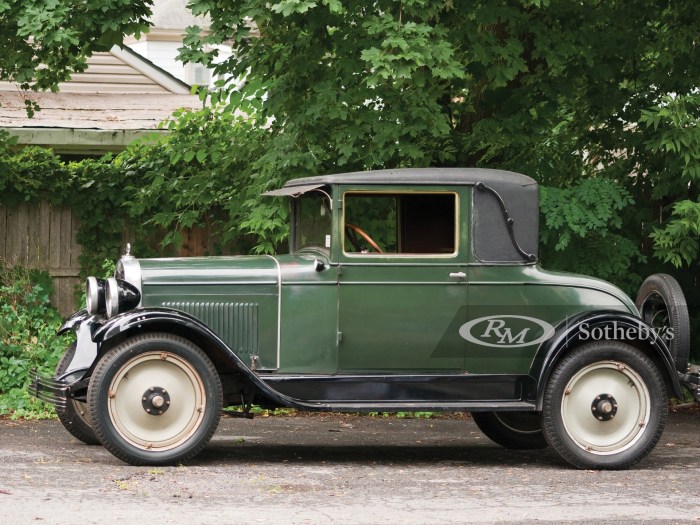
The year 1928 was a pivotal moment in the American automotive industry, marking a period of rapid growth and innovation. This era witnessed the rise of the automobile as a symbol of progress and prosperity, shaping the American landscape and lifestyle in profound ways.
The 1928 Chevrolet Coupe was a product of this dynamic period, reflecting the trends and innovations that characterized the American automotive market. Understanding the historical context of this vehicle requires examining the economic and social conditions that prevailed in the United States during this time.
The Roaring Twenties and the Automotive Industry
The 1920s, often referred to as the “Roaring Twenties,” was a period of economic prosperity and social change in the United States. The end of World War I had ushered in an era of industrial expansion and technological advancements, particularly in the automotive sector.
The invention of the assembly line by Henry Ford revolutionized automobile production, making cars more affordable and accessible to a wider segment of the population.The automobile industry experienced unprecedented growth during this period, with new car registrations soaring from 1.9 million in 1919 to 4.5 million in
This growth was fueled by several factors, including:
- Increased consumer demand:Rising wages and disposable income led to an increase in demand for automobiles, which were no longer seen as luxury items but as essential tools for transportation and leisure.
- Technological advancements:Innovations in engine design, manufacturing techniques, and materials led to more reliable, affordable, and fuel-efficient cars.
- Improved road infrastructure:The expansion of paved roads and highways made driving more convenient and accessible, further driving demand for automobiles.
- Marketing and advertising:Aggressive marketing campaigns and the use of new media, such as radio and film, effectively promoted the ownership of automobiles as a symbol of status and modernity.
This period also witnessed the rise of new car manufacturers, including Chevrolet, which played a significant role in shaping the American automotive market.
Chevrolet’s Role in the American Automotive Market
Chevrolet, founded in 1911 by Louis Chevrolet and William C. Durant, emerged as a major player in the American automotive market during the 1920s. The company’s focus on affordability and reliability made its vehicles appealing to a wide range of customers.
Chevrolet’s marketing strategies, which emphasized value and performance, further contributed to its success.In 1928, Chevrolet introduced the “Chevrolet Coupe,” a stylish and affordable two-door coupe that became a popular choice among young buyers and families. The Coupe’s sleek design, comfortable interior, and reliable performance made it a desirable vehicle for both city driving and weekend excursions.
The 1928 Chevrolet Coupe was a symbol of the American dream, representing the accessibility of the automobile to a growing middle class.
Chevrolet’s success in the 1920s was largely attributed to its ability to adapt to the changing needs and preferences of the American consumer. The company’s focus on innovation, affordability, and marketing made it a leading force in the automotive industry during this era.
1928 Chevrolet Coupe
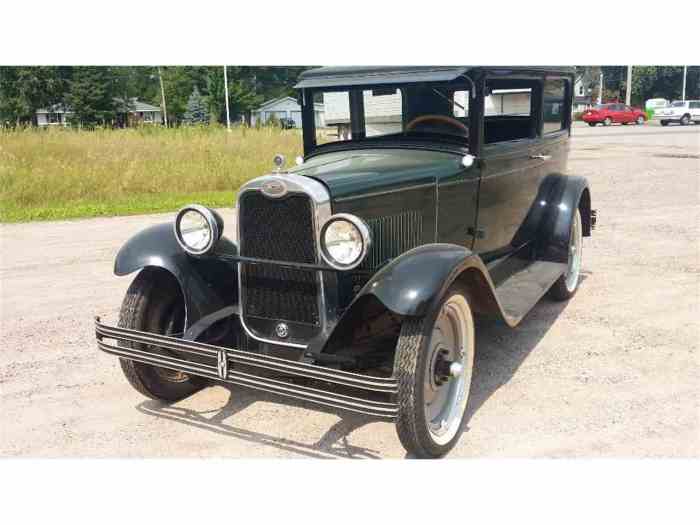
The 1928 Chevrolet Coupe was a popular and stylish vehicle that represented a significant step forward in automotive design and technology. Its sleek lines, innovative features, and reliable performance made it a desirable choice for discerning drivers of the era.
The 1928 Chevrolet Coupe, with its classic lines and timeless design, represented a turning point in American automotive history. While this era was marked by the rise of affordable transportation, Chevrolet’s innovative spirit continued to evolve, as seen in later models like the 1969 Chevrolet CST 20.
This powerful truck, with its rugged build and impressive performance, reflected Chevrolet’s dedication to providing dependable vehicles for a growing nation. Looking back at the 1928 Chevrolet Coupe, we can see the seeds of this innovation, setting the stage for future Chevrolet models that would become iconic symbols of American ingenuity.
Exterior Design
The 1928 Chevrolet Coupe featured a distinctive and elegant exterior design that reflected the prevailing trends of the late 1920s. The coupe’s body style was characterized by its low, flowing lines, a rounded hood, and a prominent radiator grille. The car’s body was constructed of steel, which provided both strength and durability.
- Body Style:The 1928 Chevrolet Coupe was offered in a single body style, a two-door coupe. This configuration provided a comfortable and stylish interior while maintaining a compact and maneuverable exterior.
- Color Options:Chevrolet offered a variety of color options for the 1928 Coupe, allowing buyers to personalize their vehicles. Popular colors included black, maroon, blue, and green. These colors were often complemented by contrasting accents, such as black fenders or a white roof.
- Distinctive Features:The 1928 Chevrolet Coupe featured several distinctive features that set it apart from other vehicles of the era. These included a prominent radiator grille with horizontal bars, a rounded hood with a distinctive “Chevrolet” emblem, and a sloping windshield that provided improved visibility.
Interior Features
The interior of the 1928 Chevrolet Coupe was designed to provide a comfortable and stylish driving experience. The coupe’s interior was characterized by its spaciousness, high-quality materials, and thoughtful design details.
- Seating Capacity:The 1928 Chevrolet Coupe could comfortably seat four passengers. The front seats were upholstered in durable cloth, while the rear seats provided ample space for two passengers.
- Dashboard Layout:The dashboard of the 1928 Chevrolet Coupe was designed to be both functional and stylish. It featured a variety of gauges and controls, including a speedometer, fuel gauge, and temperature gauge. The dashboard was typically finished in a contrasting color to the interior, adding a touch of visual interest.
- Available Amenities:While amenities were limited in automobiles of the era, the 1928 Chevrolet Coupe offered several features that enhanced the driving experience. These included a heater, a windshield wiper, and a rearview mirror.
Technical Specifications
The 1928 Chevrolet Coupe was powered by a robust and reliable engine that provided ample power for everyday driving. The car’s mechanical specifications contributed to its overall performance and handling.
The 1928 Chevrolet Coupe, with its iconic Art Deco styling, was a symbol of American automotive progress. Fast forward to the 1960s, and Chevrolet’s design philosophy had evolved significantly, culminating in the full-sized luxury of the 1966 Chevrolet Caprice.
This model, with its spacious interior and powerful engine, marked a shift towards comfort and opulence. While both the 1928 Coupe and the 1966 Caprice represent different eras in Chevrolet’s history, they share a common thread – a commitment to innovation and providing an exceptional driving experience.
- Engine Size:The 1928 Chevrolet Coupe was equipped with a 194-cubic-inch (3.2-liter) inline four-cylinder engine. This engine featured a cast iron block and a cast iron cylinder head.
- Horsepower:The 1928 Chevrolet Coupe’s engine produced approximately 40 horsepower. This was sufficient power for comfortable driving and moderate acceleration.
- Transmission Type:The 1928 Chevrolet Coupe was equipped with a three-speed manual transmission. This transmission allowed drivers to shift gears manually, providing a more engaging driving experience.
- Other Mechanical Details:The 1928 Chevrolet Coupe featured a solid front axle with leaf springs and a live rear axle with semi-elliptic leaf springs. The car also included a mechanical braking system that provided adequate stopping power.
Production and Sales
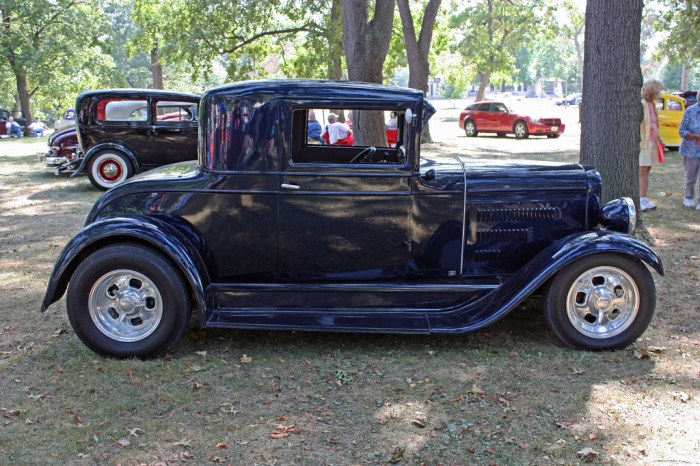
The 1928 Chevrolet Coupe was a successful model for Chevrolet, contributing significantly to the company’s growth during the late 1920s. Its production numbers and marketing strategies played a crucial role in its popularity.
Production Numbers
Chevrolet produced a substantial number of 1928 Coupes, reflecting its popularity and demand in the market. While exact figures for the Coupe specifically are not readily available, Chevrolet’s overall production for 1928 was approximately 485,000 vehicles. This high production volume indicates the success of the Chevrolet brand and its ability to meet the growing demand for automobiles during this period.
Marketing Strategies, 1928 Chevrolet Coupe
Chevrolet employed several effective marketing strategies to promote the 1928 Coupe. These strategies included:
- Targeted Advertising:Chevrolet advertisements appeared in popular magazines and newspapers, focusing on the Coupe’s affordability, reliability, and stylish design. These ads often featured images of families enjoying road trips in their new Chevrolets, appealing to the growing middle class.
- Dealership Networks:Chevrolet had a well-established network of dealerships across the United States, providing convenient access for potential buyers. Dealerships offered test drives and personalized service, further enhancing the customer experience.
- Innovative Features:Chevrolet emphasized the Coupe’s innovative features, such as its four-wheel brakes and its powerful engine. These features were marketed as providing enhanced safety and performance, attracting buyers who valued both practicality and style.
Target Audience
The 1928 Chevrolet Coupe was targeted towards a broad audience, particularly the growing middle class. Its affordability made it accessible to a wider range of buyers than previous luxury cars. The Coupe’s design and features appealed to both families and individuals, making it a versatile vehicle for various needs.
Cultural Impact
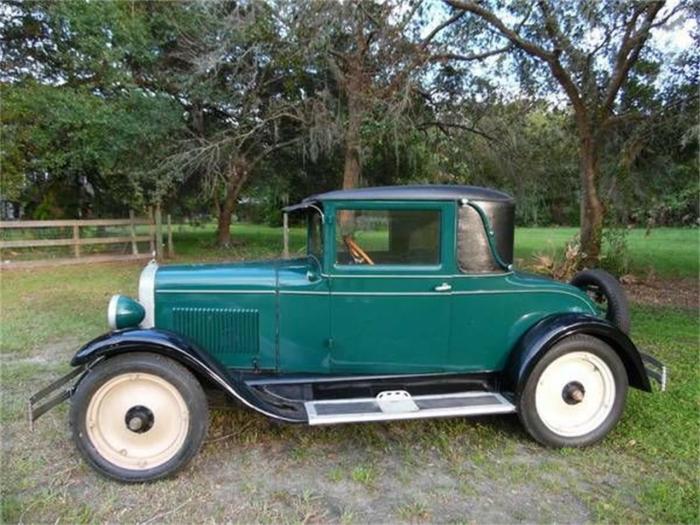
The 1928 Chevrolet Coupe was a reflection of the burgeoning American culture of the Roaring Twenties, a period marked by economic prosperity, technological advancements, and a shift in social values. The automobile, increasingly accessible and affordable, became a symbol of freedom, mobility, and personal expression, embodying the spirit of the era.
The 1928 Chevrolet Coupe and the Rise of the Automobile
The 1928 Chevrolet Coupe was part of a larger cultural shift where the automobile transitioned from a luxury item to a commonplace possession. The widespread adoption of the automobile brought about significant changes in American society, including:
- Increased mobility and travel:The automobile made it easier and faster to travel, opening up new opportunities for leisure and tourism. Road trips became popular, and the automobile helped to connect people and places across the country.
- Suburbanization:The automobile fueled the growth of suburbs, as people were able to live further away from city centers and still commute to work.
- Changes in social interaction:The automobile created new opportunities for social interaction, with people using it for dating, going to the movies, and attending sporting events.
The 1928 Chevrolet Coupe in Popular Culture
The 1928 Chevrolet Coupe, like many other automobiles of the era, made its way into popular culture, appearing in films, literature, and music. The car’s sleek design and affordability made it a popular choice for filmmakers and writers, who used it to portray the glamour and excitement of the Roaring Twenties.
- Films:The 1928 Chevrolet Coupe was featured in several silent films, such as “The Last Warning” (1929) and “The Man Who Laughs” (1928), capturing the era’s fascination with automobiles and speed.
- Literature:The 1928 Chevrolet Coupe was also a recurring motif in popular literature of the time. For example, in F. Scott Fitzgerald’s “The Great Gatsby,” the automobile serves as a symbol of wealth and status, reflecting the social aspirations of the era.
The 1928 Chevrolet Coupe, with its classic lines and timeless appeal, represents a significant era in automotive history. While it embodies the elegance of a bygone era, it’s interesting to contrast its design with the rugged utility of the 1971 Chevrolet C10 , a pickup truck known for its workhorse capabilities.
Both vehicles, though vastly different in purpose, share the Chevrolet legacy of enduring quality and American craftsmanship.
- Music:The 1928 Chevrolet Coupe was also featured in several popular songs of the era, with lyrics often referencing the car’s speed, style, and the freedom it represented. The song “Chevrolet” by the Ink Spots (1939) is one such example, paying homage to the car’s popularity and cultural significance.
Comparison with Contemporaries
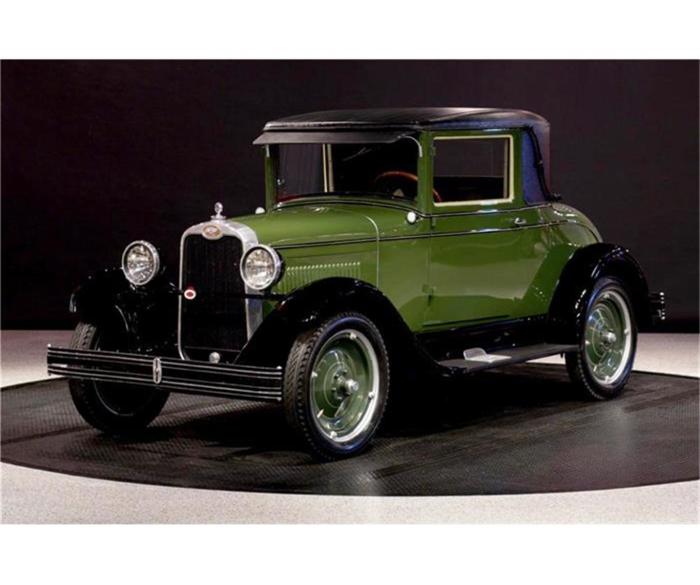
The 1928 Chevrolet Coupe, while a popular and successful model, competed in a crowded and dynamic automotive market. Understanding its place within this landscape requires comparing it to other popular coupes of the era. This analysis examines the similarities and differences in design, features, and performance, highlighting Chevrolet’s competitive positioning in 1928.
Design and Features
The 1928 Chevrolet Coupe was a stylish and modern car for its time, incorporating many of the design trends of the era. Its sleek lines, rounded fenders, and distinctive radiator grille were characteristic of the Art Deco aesthetic that was prevalent in the late 1920s.
The coupe’s body style, with its two doors and a sloping roofline, was also popular among manufacturers. To illustrate the similarities and differences in design, we can consider a few key competitors:
- Ford Model A Coupe:The Ford Model A, launched in 1927, was a direct competitor to the Chevrolet Coupe. Both cars shared a similar design philosophy, featuring a streamlined body, rounded fenders, and a prominent radiator grille. However, the Ford Model A was slightly larger and more luxurious, with a longer wheelbase and a more spacious interior.
The Model A also featured a more sophisticated engine, offering greater power and performance.
- Chrysler Coupe:Chrysler, a newer player in the automotive market, entered the coupe segment with its own stylish and modern offering. While the Chrysler Coupe was generally more expensive than the Chevrolet Coupe, it was known for its advanced engineering and luxurious appointments.
The Chrysler featured a more powerful engine and a more refined suspension, offering a smoother and more comfortable ride.
- Dodge Coupe:Dodge, another established automaker, offered a variety of coupes in 1928, competing directly with Chevrolet. The Dodge coupes were generally more robust and durable, with a focus on practicality and affordability. Dodge’s engines were known for their reliability and longevity, making them a popular choice among families and businesses.
Performance and Technology
The 1928 Chevrolet Coupe was powered by a 194 cubic inch four-cylinder engine, producing 35 horsepower. While this engine provided adequate performance for its time, it was less powerful than the engines offered by some of its competitors. The Ford Model A, for example, boasted a 200 cubic inch four-cylinder engine generating 40 horsepower, while the Chrysler Coupe featured a 299 cubic inch six-cylinder engine capable of producing 68 horsepower.The Chevrolet Coupe also lagged behind its competitors in terms of technological advancements.
While the Ford Model A offered a more advanced engine and a more refined suspension, the Chrysler Coupe featured innovations such as hydraulic brakes and a fully synchronized transmission. The Chevrolet Coupe, on the other hand, relied on mechanical brakes and a non-synchronized transmission, which were considered less sophisticated and less desirable by some buyers.
Market Position
The 1928 Chevrolet Coupe was positioned as a value-oriented option in the crowded coupe market. Its affordable price and relatively basic features made it an attractive choice for budget-conscious buyers. However, Chevrolet also recognized the need to compete with more upscale and technologically advanced models, offering features such as a stylish design and a comfortable interior to appeal to a wider audience.The Chevrolet Coupe’s success in the market can be attributed to its combination of affordability, practicality, and style.
While it may not have been the most powerful or technologically advanced coupe on the market, it offered a compelling value proposition for buyers who were looking for a reliable and stylish car at a reasonable price.
Collecting and Restoration
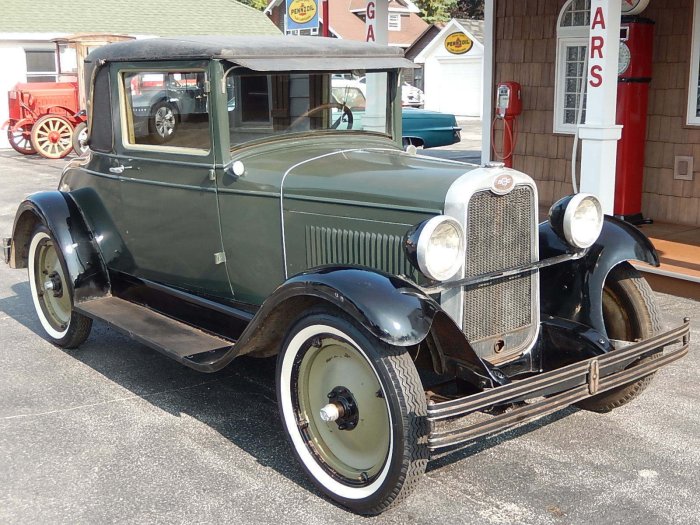
The 1928 Chevrolet Coupe, a classic symbol of the roaring twenties, continues to capture the hearts of collectors and enthusiasts. Its timeless design and historical significance make it a sought-after collectible, attracting those who appreciate the craftsmanship and nostalgia of a bygone era.
Value and Market Trends
The value of a 1928 Chevrolet Coupe varies greatly depending on its condition, originality, and rarity. A well-preserved and fully restored example can command a significant price, reaching tens of thousands of dollars.
- Restored models in excellent condition can fetch upwards of $30,000.
- Original, unrestored cars in good condition typically sell for between $10,000 and $20,000.
- Cars requiring significant restoration work can be purchased for lower prices, but the cost of restoration can quickly add up.
The value of vintage Chevrolet vehicles has been steadily increasing over the past few decades, making them a potentially lucrative investment for collectors. However, it’s essential to conduct thorough research and consult with experts before making any purchase decisions.
Restoring a 1928 Chevrolet Coupe
Restoring a 1928 Chevrolet Coupe is a labor of love that requires patience, skill, and dedication. The process typically involves the following steps:
- Disassembly:The car is carefully disassembled, with each part meticulously labeled and documented.
- Bodywork:Any rust or damage is repaired, and the body is prepped for painting.
- Paint:The car is painted using high-quality automotive paint, often in its original color.
- Engine and Mechanical Components:The engine and other mechanical components are rebuilt or restored to factory specifications.
- Interior:The interior is reupholstered and restored to its original condition.
- Assembly:The car is carefully reassembled, and all components are tested and adjusted.
Resources for Collectors and Enthusiasts
Numerous resources and organizations exist to support collectors and enthusiasts of vintage Chevrolet vehicles. These resources provide valuable information, guidance, and a sense of community for those passionate about these classic cars.
- Chevrolet Clubs:There are numerous Chevrolet clubs around the world, offering events, forums, and support for members.
- Online Forums:Online forums dedicated to Chevrolet vehicles provide a platform for collectors to share information, ask questions, and connect with other enthusiasts.
- Vintage Car Parts Suppliers:Specialized suppliers offer a wide range of parts and accessories for vintage Chevrolet vehicles, making it easier to find the necessary components for restoration.
- Restoration Shops:Professional restoration shops specialize in restoring vintage Chevrolet vehicles to their former glory. These shops have the expertise and equipment to handle complex restoration projects.
Visual Representation
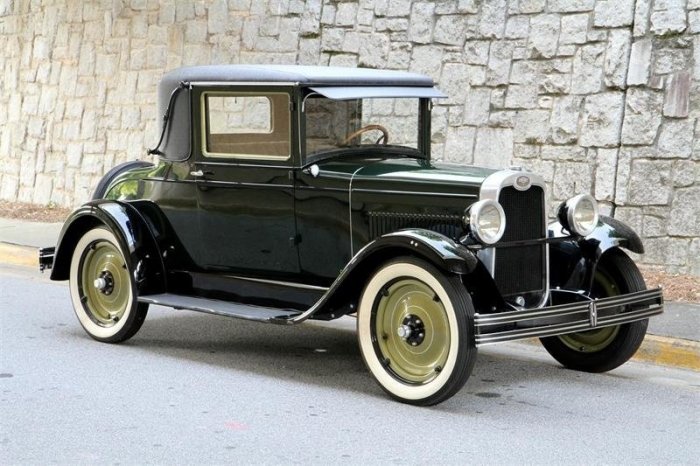
The 1928 Chevrolet Coupe, with its sleek lines and timeless design, was a symbol of the burgeoning automotive industry in the late 1920s. To better understand the car’s aesthetic appeal and technical prowess, we can examine its key features through a visual representation.
Key Features of the 1928 Chevrolet Coupe
This table highlights the key features of the 1928 Chevrolet Coupe, categorized by exterior, interior, technical specifications, and cultural significance.
| Feature | Exterior | Interior | Technical Specifications | Cultural Significance |
|---|---|---|---|---|
| Design | Sleek and streamlined body, rounded fenders, distinctive radiator grille with Chevrolet emblem, two-door coupe configuration | Comfortable seating for four passengers, wooden dashboard with simple gauges, vinyl upholstery, optional accessories like a radio | 1.5-liter four-cylinder engine, 19 horsepower, three-speed manual transmission, solid rear axle suspension | Symbol of the Roaring Twenties, affordable transportation for the middle class, represented a shift towards personal mobility |
Visual Representation of the 1928 Chevrolet Coupe
The 1928 Chevrolet Coupe boasted a distinctive design that reflected the era’s aesthetic sensibilities. Its exterior was characterized by a sleek and streamlined body, rounded fenders, and a distinctive radiator grille adorned with the Chevrolet emblem. The two-door coupe configuration provided a compact and intimate driving experience.
The car’s paint schemes were typically offered in a range of classic colors, such as black, blue, and red.
Evolution of Chevrolet Coupes
The 1928 Chevrolet Coupe marked the beginning of a long and illustrious lineage of Chevrolet coupes. Over the decades, Chevrolet coupes underwent significant transformations, evolving in terms of design, technology, and performance.The 1950s saw the emergence of iconic designs like the Bel Air and the Corvette, featuring bold styling and powerful engines.
The 1960s brought about the Camaro, a muscle car that became a symbol of American automotive power. Subsequent generations of Chevrolet coupes continued to innovate, incorporating advancements like fuel injection, disc brakes, and sophisticated suspension systems.Today, Chevrolet offers a diverse range of coupes, from the sleek Camaro to the luxurious Corvette, catering to a wide spectrum of tastes and preferences.
While the 1928 Chevrolet Coupe may have been a simple car by today’s standards, its legacy lives on in the enduring appeal of Chevrolet coupes.
Final Thoughts
The 1928 Chevrolet Coupe stands as a testament to the enduring appeal of classic American automobiles. Its timeless design, reliable performance, and cultural significance continue to captivate enthusiasts today. Whether cruising down a modern highway or parked in a classic car show, the 1928 Chevrolet Coupe remains a symbol of a bygone era, reminding us of the ingenuity and craftsmanship that defined the early days of the American automotive industry.